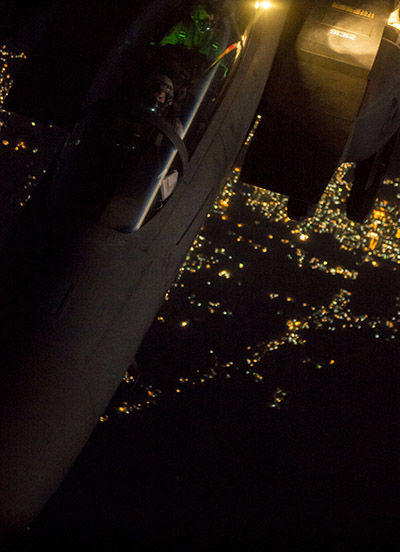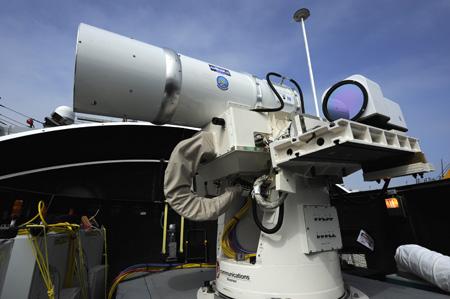All branches of the military want laser weapons, but not everyone wants them for the same missions. Interestingly, the one published on Breakingdefense.com on Pentagon research on laser weapons.
"The USAF is pursuing a dual approach: a laser for the AC-130 gunship and another for the F-15E Strike Eagle. Neither was designed for the missile defense system, Holy Grail for the Army and the Navy. The Air Force, on the other hand, would like a laser to take down enemy vectors and ultimately land targets ".
Needless to point out the technical obstacles for the Air Force laser tactical applications.
"Technically it is much easier to adapt a laser weapon on a terrestrial carrier or on a Navy ship. Just think of the first and only operational laser weapon in the world installed on the USS Ponce (photo), ship from 17.000 tons. In contrast, the AC-130J weighs only '82 tons at full load. The F-15E just 40 ".
Analyzing the tactical purpose of the lasers for the Army, the Marine Corps and the Navy, such as the High-Energy Laser Mobile Demonstrator, the Ground-Based Air Defense and the Laser Weapon System, it is clear that they were designed for defensive purposes . The ultimate goal is a laser with the power and capacity (hence the reach) to break down incoming ballistic and cruise missiles, protect a base, land unit or naval task force.
The Air Force laser is more aggressive. The laser option on the AC-130 gunship would mean having a precise weapon that is destructive, much more lethal than conventional systems.
 "Hitting a target with direct energy (in reference to the F-15) in an air-to-air context, means hitting it in milliseconds and no longer in minutes"
"Hitting a target with direct energy (in reference to the F-15) in an air-to-air context, means hitting it in milliseconds and no longer in minutes"
An AIM-120 AMRAAM air-to-air missile flies at around 3.000 miles per hour, even if the actual data is classified. A laser, on the other hand, "moves" at the speed of light, ie 186.000 miles per second.
"With just one gallon of 'gas', we could hit dozens of targets. Instead of carrying half a dozen supersonic missiles, an airplane could fire hundreds of laser shots before being refueled by a tanker. In this way, his mission would not be limited to the loading of weapons. Because lasers can fire an infinite number of shots at the speed of light, they are ideal for intercepting high-speed threats. "
The different approach of the Air Force with respect to the Navy and the Army appears evident. Rather than trying to protect a ship, a base or a fleet, the USAF focuses on the self-protection of the single laser-carrying aircraft. The Air Force would like a multi-purpose laser: defensive / offensive weapons that can fire in low-power mode for self-defense, in non-lethal offensive mode (to burn sensors or engines) and, finally, in lethal mode.
The Air Force expects to test the first 150 kW airborne lasers within the next five years.
The Air Force Research Laboratory roadmap includes a three-stage development plan.
The SHIELD defense system, which will have to demonstrate the capability of self-defense of laser weapons, will be tested within the 2020. The first test for a 2022 kilowatt defensive laser system is planned for the 100.
Finally, within the 2024, an offensive 300 kilowatt system will be tested, capable of destroying enemy aircraft and long-range land targets.
Should they actually work, the first "pocket" laser weapons could also equip the F-22 or the F-35, but you certainly can't hope to see them integrated into the cell. This means that both the Raptor and the Lightning II can, between 10 or 15 years, carry laser weapons, but at the expense of the stealth of their cell, not designed for implementing energy systems. However, it is clear that the state of the art of laser weapons will not be reached before the 2040-2050, in theory ready for the future sixth generation fighter, in the design phase.
(photo: US Navy / US DoD)












